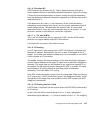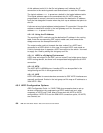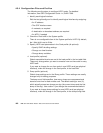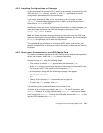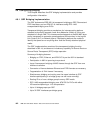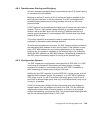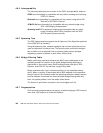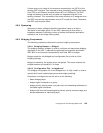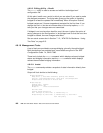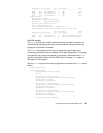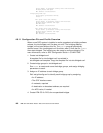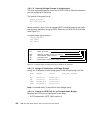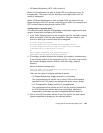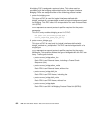Configuration of IP-Forwarding Media Cards 145
A frame may be too large for the maximum transmission unit (MTU) of the
sending GRF interface. One example is when forwarding a 4500-byte frame
from FDDI to an Ethernet interface with an MTU of 1500 bytes. The GRF
bridge will attempt to break such a frame into fragments that will fit the
sending interface. This is possible if the frame contains an IP datagram; then
the GRF may use the fragmentation rules of IP to split the frame. Otherwise,
the GRF
must drop
the frame.
4.6.8 Spamming
Spamming is when a bridging interface forwards a frame to all active
interfaces in the bridge group. On the GRF, spamming is done when a
broadcast address is received or when a frame arrives whose destination
address is not in the bridge filtering table.
4.6.9 Bridging Components
The following subsections discuss the various bridging components.
4.6.9.1 Bridging Daemon – Bridged
The bridging daemon, bridged, is used to configure and manipulate bridging
interfaces on the GRF. It operates the spanning tree algorithm specified in
IEEE 802.1d and ensures interoperability with other 802.1d bridges.
Bridged reads the /etc/bridged.conf configuration file to build an
initial
bridging topology.
Bridged is started by the system script /etc/grstart. This script monitors the
bridged daemon and restarts it if it stops.
4.6.9.2 Configuration File – bridged.conf
The bridging configuration file is /etc/bridged.conf. A utility, bredit, is used to
access the file and create bridge groups and bridging settings.
Parameters in bridged.conf can be set to do the following:
• Name bridge groups
• Assign logical interfaces to a group
• Assign priority, starting state, root path cost, and forwarding addresses to
individual logical interfaces
• Assign hello time and forwarding delay values, priority, maximum age, and
discard addresses to individual groups



